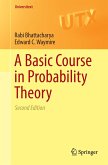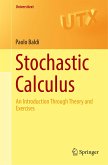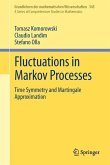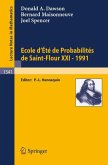'Peacocks' and their associated mathematical phenomena, 'martingales', play a key role in the mathematics of finance. This monograph uses a variety of methods from time inversion to Skorokhod embeddings in its exploration of peacocks and martingales.
We call peacock an integrable process which is increasing in the convex order; such a notion plays an important role in Mathematical Finance. A deep theorem due to Kellerer states that a process is a peacock if and only if it has the same one-dimensional marginals as a martingale. Such a martingale is then said to be associated to this peacock. In this monograph, we exhibit numerous examples of peacocks and associated martingales with the help of different methods: construction of sheets, time reversal, time inversion, self-decomposability, SDE, Skorokhod embeddings. They are developed in eight chapters, with about a hundred of exercises.
We call peacock an integrable process which is increasing in the convex order; such a notion plays an important role in Mathematical Finance. A deep theorem due to Kellerer states that a process is a peacock if and only if it has the same one-dimensional marginals as a martingale. Such a martingale is then said to be associated to this peacock. In this monograph, we exhibit numerous examples of peacocks and associated martingales with the help of different methods: construction of sheets, time reversal, time inversion, self-decomposability, SDE, Skorokhod embeddings. They are developed in eight chapters, with about a hundred of exercises.
From the reviews: "The authors provide several characterizations of the peacock property, and then continue to provide many different examples of peacocks. ... For researchers, the book is a great opportunity to get introduced to this relatively new and fascinating branch of probability theory. For practitioners who want to create models for empirically given marginals (given, e.g., via option prices), the monograph should be a very valuable reference." (Nicolas Perkowski, Zentralblatt MATH, Vol. 1227, 2012)








